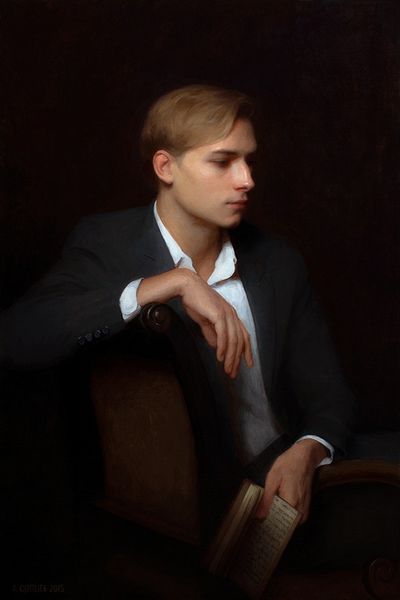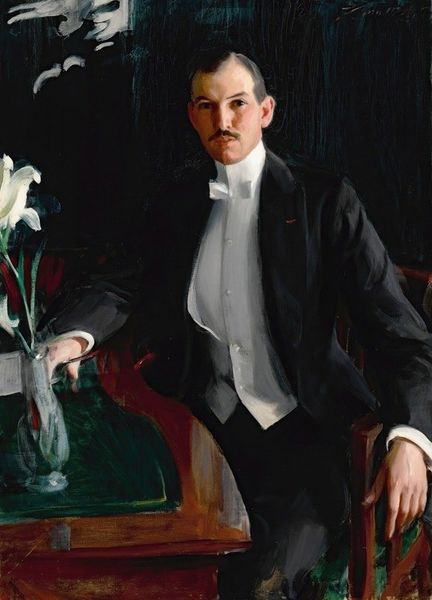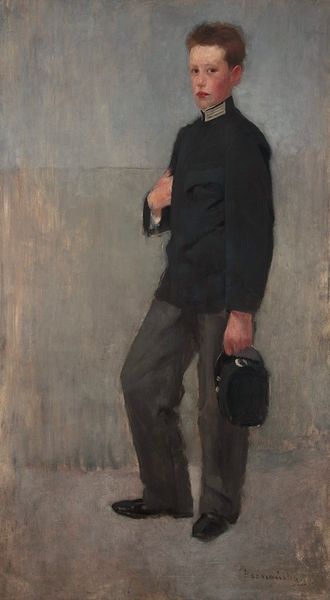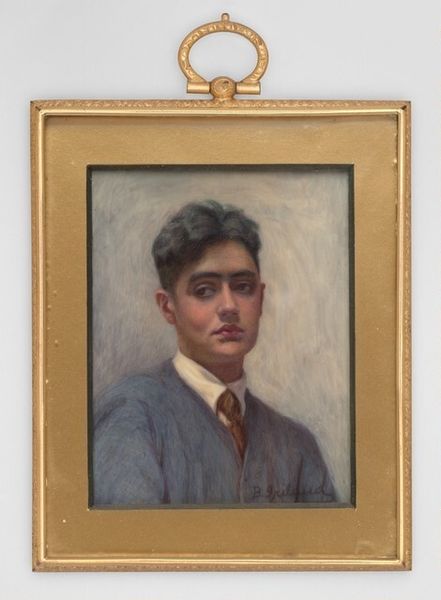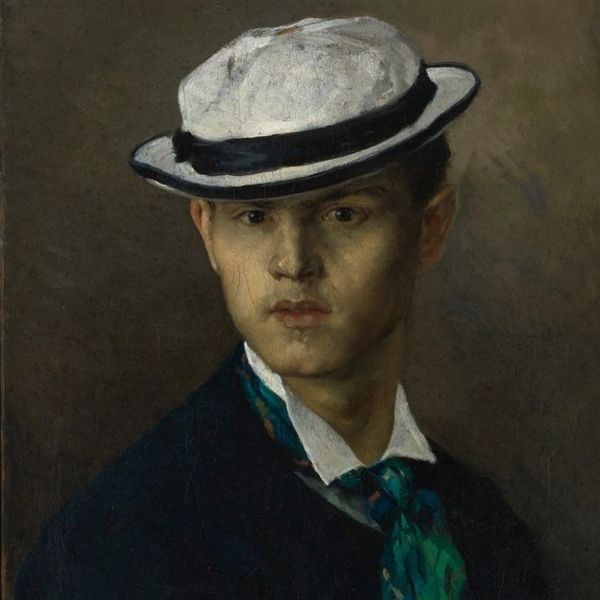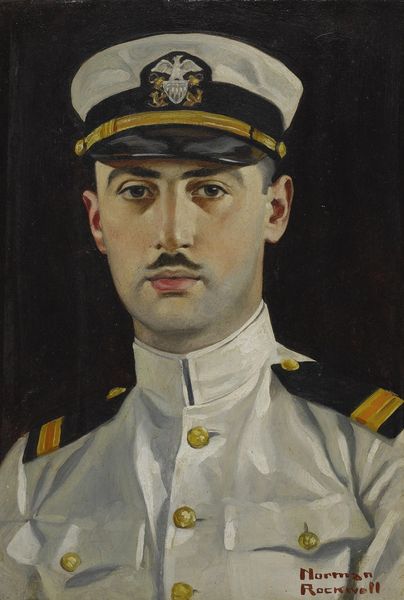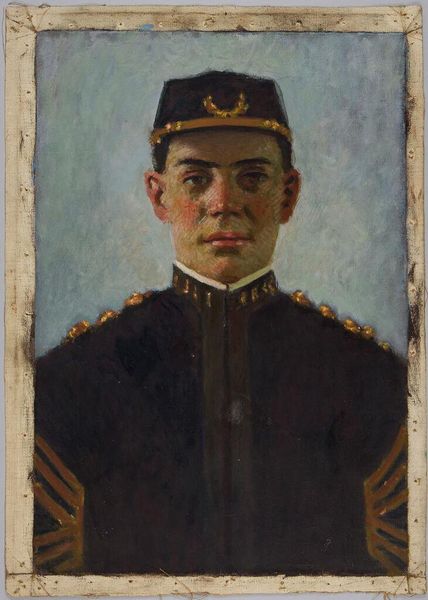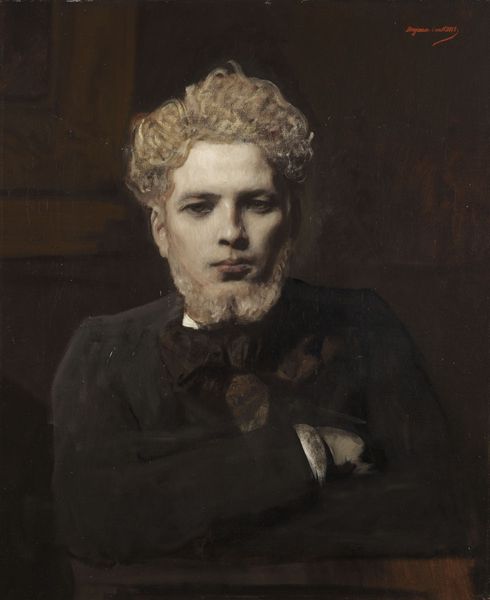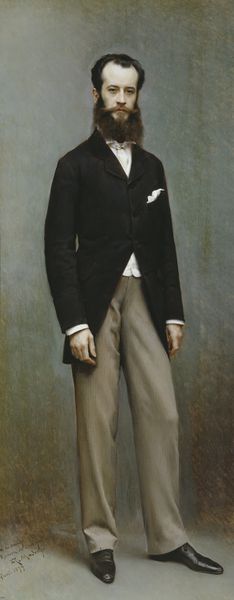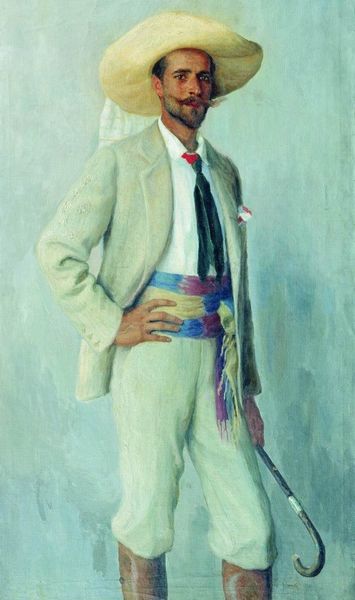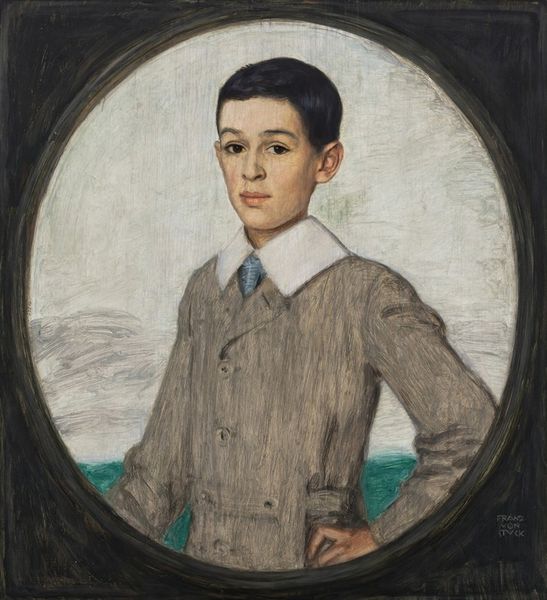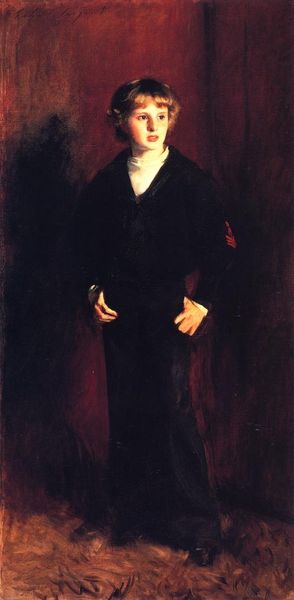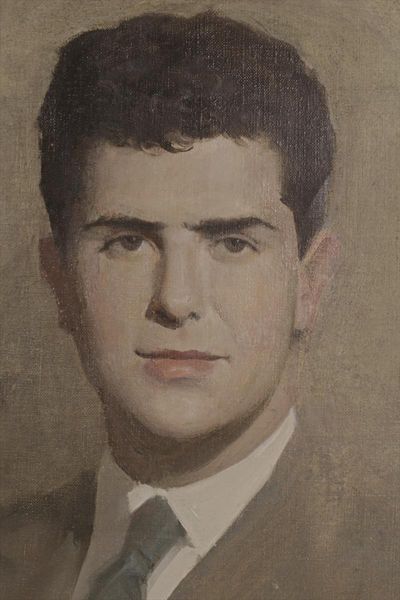
oil-paint, photography
#
portrait
#
figurative
#
oil-paint
#
figuration
#
photography
#
academic-art
#
realism
Copyright: Modern Artists: Artvee
Editor: Here we have "Yair" by Joshua LaRock, rendered with oil paint. It feels so classical and academic. What's striking to me is the combination of the very traditional style with what looks like a modern naval uniform. What are your thoughts on this juxtaposition? Curator: It’s an intriguing clash of eras, isn’t it? The meticulous realism, reminiscent of 19th-century academic painting, contrasts sharply with the contemporary uniform. I am more concerned about its social dimension. Who is the portrait made for, and what’s the function of idealizing individuals? Why use this academic, almost heroic, style to depict a contemporary figure in what could be seen as a position of authority? Editor: That's a great point. So the style is referencing something... Almost lending authority, as if it's meant to portray someone in power or prestige. Curator: Precisely. Historically, such portraits were commissioned by the wealthy and powerful to reinforce their status. Think about the history of the military as a pillar of socio-political order; academic portraiture was used to immortalize leaders. But how does this visual language function today? Is it an attempt to revive certain ideals, or perhaps critique them? Editor: Interesting. So looking at it from this perspective, it invites questions about how we portray power and leadership in contemporary society, and who gets to be immortalized in this way? Curator: Exactly. And consider the role of museums and galleries in perpetuating or challenging these historical narratives through the art they exhibit. The decision to display a work like this raises crucial questions about the politics of representation and the messages we're implicitly endorsing. It encourages us to think about the historical role and function of institutions dedicated to the arts. Editor: This has really made me think about the artwork as more than just an image, but something tied to society itself. Curator: Indeed. The layers of context – historical, social, political – shape how we understand and interact with art, turning simple appreciation into thoughtful dialogue about power, representation, and the role of art institutions in shaping these narratives.
Comments
No comments
Be the first to comment and join the conversation on the ultimate creative platform.
